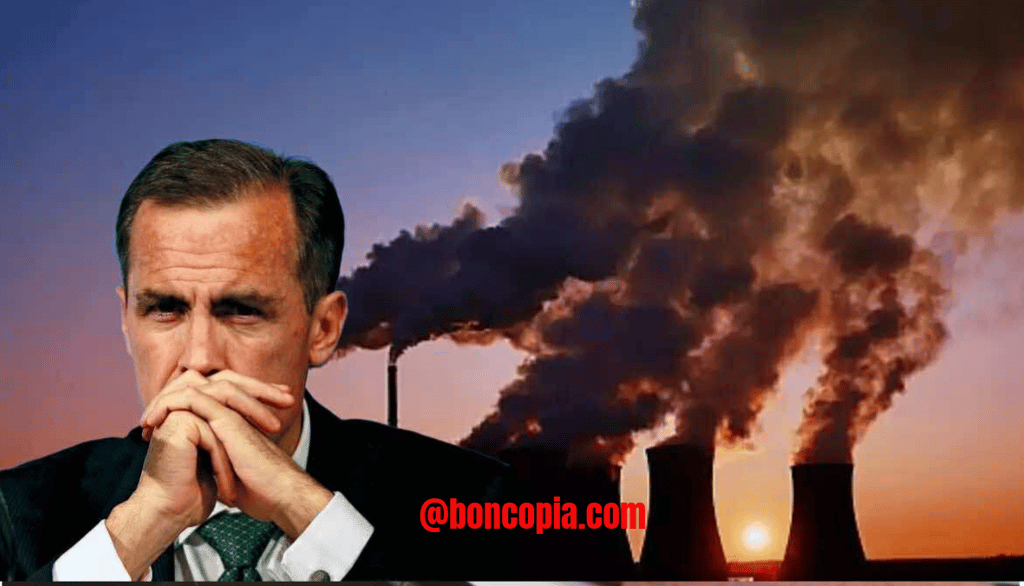Mark Carney’s Climate Crusade: Canada’s New Prime Minister Takes on the Existential Threat
5/21/20253 min read


Mark Carney’s Climate Crusade: Canada’s New Prime Minister Takes on the Existential Threat
Introduction
In a world where climate change looms as an "existential threat," Canada’s newly elected Prime Minister, Mark Carney, has stepped into the spotlight with a bold agenda. Known for his financial acumen and previous roles as governor of the Bank of Canada and the Bank of England, Carney’s transition to political leadership marks a pivotal moment in Canada’s approach to environmental sustainability. His recent statement, "Climate change is an existential threat. We all recognize that," resonates with a global audience increasingly concerned about the planet’s future. But what does this mean for Canada, and how does Carney plan to translate his vision into action? Let’s dive in.
Carney’s Climate Legacy
Mark Carney’s commitment to climate action is not new. As a financial leader, he has long advocated for the integration of environmental considerations into economic policy. His role as the UN Special Envoy for Climate Action and Finance, coupled with his leadership in the Glasgow Financial Alliance for Net Zero, underscores his belief that addressing climate change is both a moral imperative and a commercial opportunity. This perspective is evident in his recent political stance, where he emphasizes the urgency of reducing greenhouse gas emissions and achieving net zero by 2050.
Carney’s election in 2025, despite initial poor polling, reflects a strategic shift towards climate issues. His minority government win suggests that Canadian voters are increasingly prioritizing environmental concerns, even amidst economic challenges. This political landscape, shaped by global events like the COVID-19 pandemic and the need for economic recovery, provides a fertile ground for Carney’s climate policies.
The Existential Threat Narrative
Labeling climate change as an "existential threat" is a powerful rhetorical choice. It suggests that the stakes are extraordinarily high, potentially threatening humanity’s very existence. While some experts argue that this phrasing might overstate the risk of human extinction, it undeniably highlights the severe consequences for coastal communities, island nations, and global ecosystems. Carney’s use of this term aligns with a growing consensus among world leaders and climate scientists, who recognize the need for immediate and decisive action.
Policy Proposals and Challenges
Carney’s approach to climate change is multifaceted, focusing on government action, societal movements, and technological innovation. He advocates for investments in new technologies and changes in business practices to reduce emissions. The Canadian Net-Zero Emissions Accountability Act, enacted in 2021, enshrines the goal of net-zero emissions by 2050, ensuring transparency and accountability in the government’s efforts.
However, the path to net zero is fraught with challenges. Canada’s reliance on fossil fuels, particularly in Alberta’s oil sands, poses a significant hurdle. Balancing economic interests with environmental goals will require delicate negotiation and robust policy frameworks. Moreover, Carney’s minority government status means he must navigate a complex political landscape, securing support from opposition parties and provincial governments.
Global Implications
Carney’s leadership extends beyond Canada’s borders. His experience as a global financial leader positions him to influence international climate policy. The 2025 Canadian federal election, held amidst global scrutiny, underscores the interconnectedness of national and international climate strategies. As Canada commits to reducing emissions by 40-45% from 2005 levels by 2030, Carney’s policies could serve as a model for other nations grappling with similar challenges.
Engaging the Reader
As we reflect on Carney’s climate crusade, it’s clear that his leadership marks a critical juncture in Canada’s environmental journey. His vision of a net-zero future, driven by technological innovation and societal change, offers hope amidst the existential threat of climate change. But the road ahead is not without obstacles. How will Carney balance economic priorities with environmental imperatives? Can his minority government muster the political will to enact transformative policies? And what role will Canada play on the global stage in the fight against climate change?
Thought Questions
How can Canada’s commitment to net-zero emissions influence global climate policies?
What are the potential economic and social impacts of transitioning to a low-carbon economy in Canada?
How might Mark Carney’s background in finance shape his approach to climate change as Prime Minister?
Conclusion
Mark Carney’s ascent to Prime Ministership heralds a new era in Canada’s battle against climate change. His recognition of the existential threat posed by global warming, coupled with his extensive experience in financial and environmental policy, positions him as a key player in the global fight for sustainability. As Canada navigates this critical period, the world watches, hopeful that Carney’s leadership will inspire action and innovation. The journey to net zero is daunting, but with visionary leadership, it is within reach. What do you think? Can Canada lead the way in the global climate crisis? Share your thoughts and join the conversation.
hello@boncopia.com
+13286036419
© 2025. All rights reserved.